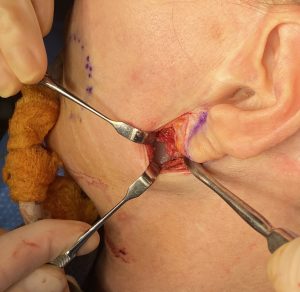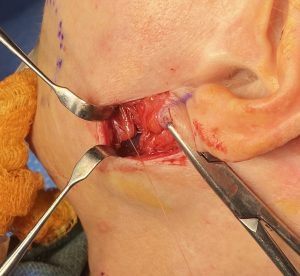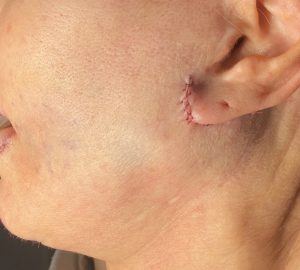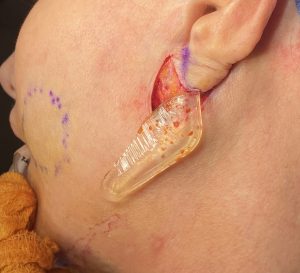The custom jawline implant is the definitive 3D method of reshaping the lower face. With a predetermined design made to fit the patient’s anatomy on an individual basis its effects are far more aesthetically powerful than any use of standard jaw implants. But the preoperative design is a best guess estimate of what the patient is trying to achieve so some patients may desire postoperative changes once the result is fully seen. There is also the phenomenon that how a patient feels about a facial change once they wear it for a while, even if the preoperative design actually achieved what the patient initially wanted, may change.
One of the most common secondary changes of custom jawline implants is to add additional jaw angle width. To avoid designing and replacing an indwelling custom jawline implant, that has a largely good aesthetic effect and to avoid such a ‘nuclear’option, it is possible to add onto it. This can be done with a custom jaw angle implant overlay design or modifying standard jaw angle implants. There are advantages to either approach and it depends on how much change is needed and how it has to fit over the existing implant.
The other consideration in an overlay implant technique is the incisional approach. It would be assumed that the intraoral approach used for the custom jawline implant would be used and obviously it can. But to lower the risk of postoperative infection, which risks the entire implant, as well as decrease the recovery period, an external or transcutaneous approach can be used.



A multi-layer closure with resorbable suture is done up to and around the earlobe.
Dr. Barry Eppley
World-Renowned Plastic Surgeon




